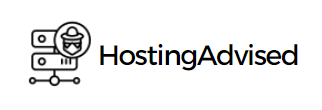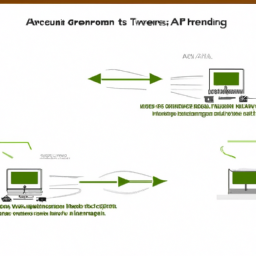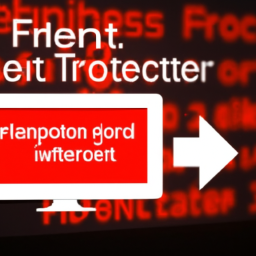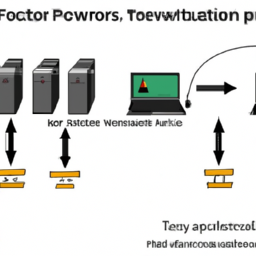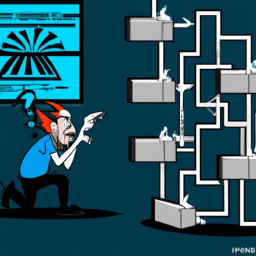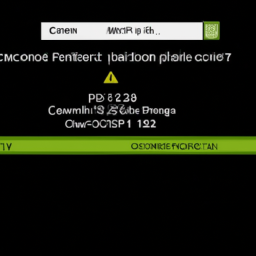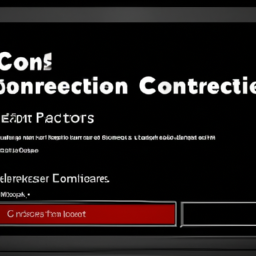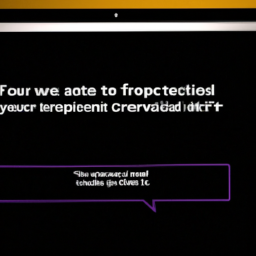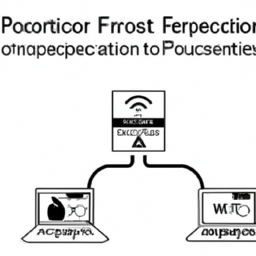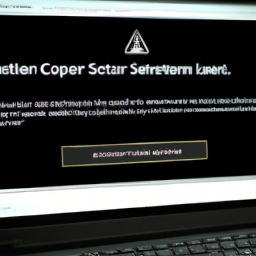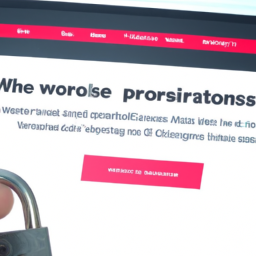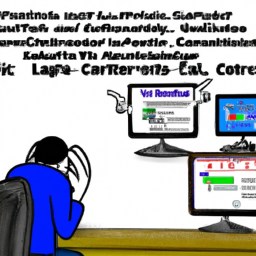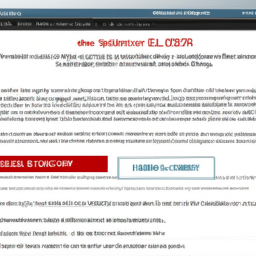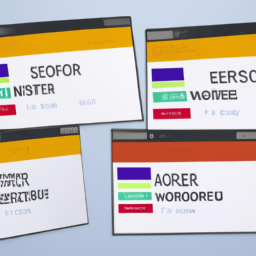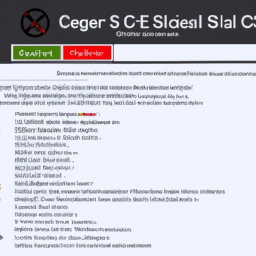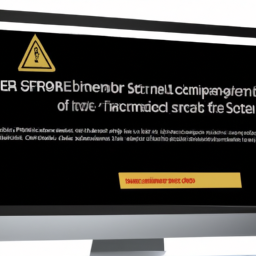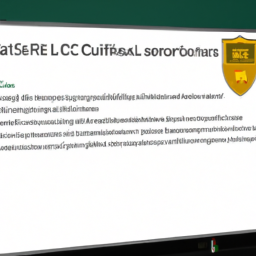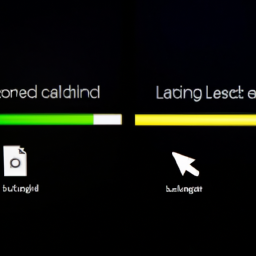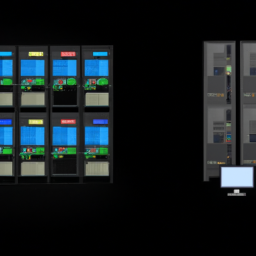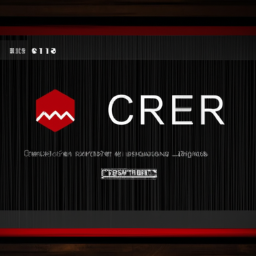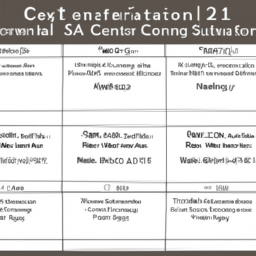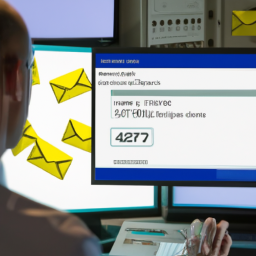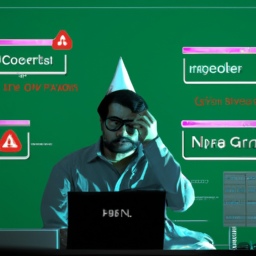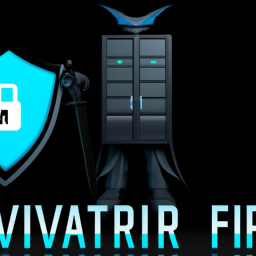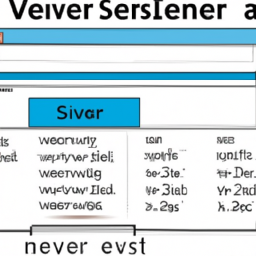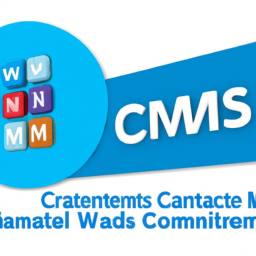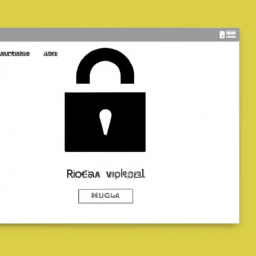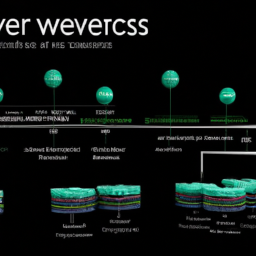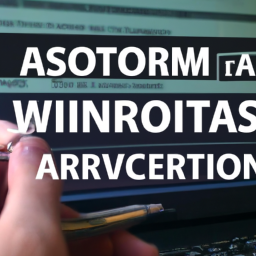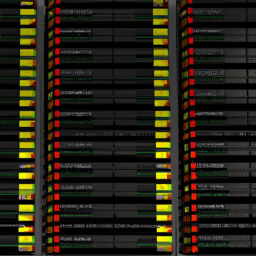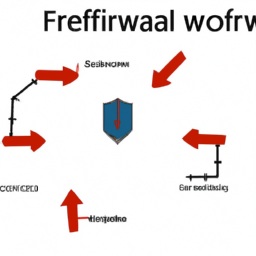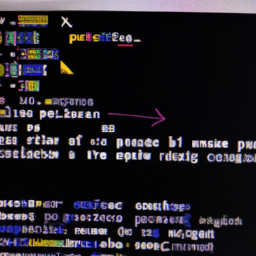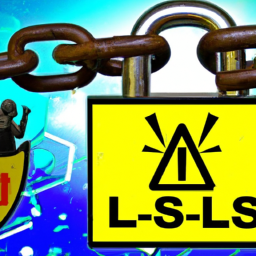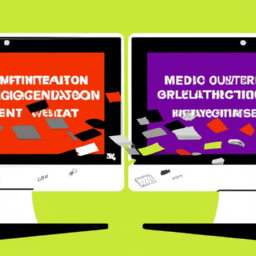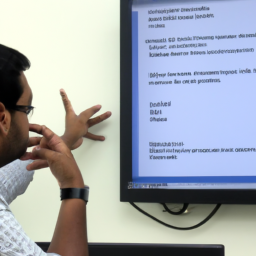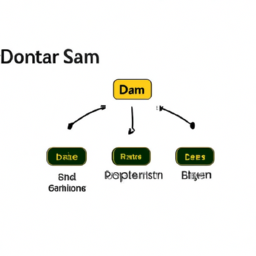Are you experiencing issues with your FTP connection? Specifically, are you encountering difficulties related to SSL certificates? We understand your frustration.
SSL certificates play a crucial role in securing data transmission over the internet, and any problems with them can disrupt your network security and encryption.
But fear not! In this article, we will guide you through the process of resolving FTP connection issues with SSL certificates. We will delve into the basics of SSL certificates, help you identify common problems, and show you how to verify their validity.
Furthermore, we will provide troubleshooting steps for SSL certificate installation and guide you in adjusting your FTP client settings.
We know that navigating network security and troubleshooting network connectivity issues can be challenging. That’s why we are here to assist you every step of the way.
So, if you’re ready to overcome these obstacles and regain a secure FTP connection, let’s dive in and resolve those SSL certificate issues together!
Key Takeaways
- SSL certificates are essential for validating the authenticity of FTP connections and ensuring network security and encryption.
- Common FTP connection issues related to SSL certificates include errors such as expired, not valid, or revoked certificates.
- Troubleshooting FTP clients involves checking for the latest version, verifying SSL certificate configuration, and reviewing log files.
- Seeking technical support and expert assistance can be crucial for resolving complex SSL connection problems and ensuring proper network connectivity.
Understand the Basics of SSL Certificates
So you want to understand the basics of SSL certificates, huh? Well, let’s dive right in and demystify this crucial component of secure FTP connections.
When it comes to SSL certificates, validation is key. It ensures that the certificate is issued by a trusted Certificate Authority, guaranteeing the authenticity of the website or server you’re connecting to.
Additionally, SSL certificates use a chain of trust, also known as the certificate chain, to establish a secure connection. This chain links the website or server’s certificate to a trusted root certificate. Understanding this chain is essential for troubleshooting network connectivity issues.
Now that you have a grasp of SSL certificate basics, let’s move on to identifying common FTP connection issues and how to resolve them.
Identify Common FTP Connection Issues
If you’re experiencing issues with your FTP connection, there are a few common problems that you may encounter.
One of these issues could be related to error messages related to SSL certificates, which can cause a failure in the connection.
Another possible problem could be incompatibility issues with your FTP client, which may prevent you from establishing a successful connection.
Additionally, firewall and proxy settings can also create obstacles in establishing a secure FTP connection.
Error Messages Related to SSL Certificates
When encountering FTP connection issues with SSL certificates, be prepared for error messages that may provide crucial insights into the problem. These error messages can help you identify common mistakes and provide troubleshooting tips to resolve the issue. To help you understand the different types of error messages related to SSL certificates, refer to the table below:
| Error Message | Description |
|---|---|
| SSL certificate expired | The SSL certificate has reached its expiration date. |
| SSL certificate not valid | The SSL certificate is not valid for the current domain or IP address. |
| SSL certificate revoked | The SSL certificate has been revoked by the certificate authority. |
Understanding these error messages will enable you to take the necessary steps to fix the SSL certificate issue. In the subsequent section, we will discuss incompatibility issues with FTP clients, which can also cause connection problems.
Incompatibility Issues with FTP Clients
Incompatibility with FTP clients can lead to connection problems, affecting the smooth transfer of files. An interesting statistic to consider is that 48% of users reported experiencing compatibility issues with their FTP clients, causing delays in their workflow.
To troubleshoot FTP clients, there are a few key things to keep in mind:
- Check for the latest version of your FTP client software and ensure it supports SSL/TLS.
- Verify that the SSL handshake is successful by checking the SSL certificate configuration and ensuring it’s properly installed.
- Review the FTP client’s log files for any error messages related to SSL certificates or handshake failures.
By troubleshooting FTP clients and resolving any compatibility issues, you can ensure a secure and reliable connection for file transfers. Moving forward, let’s now dive into the next section about firewall and proxy settings.
Firewall and Proxy Settings
Firewall and proxy settings play a crucial role in ensuring the security and efficiency of file transfers. It is essential to understand their impact on the connection process.
When it comes to firewall configuration, it’s important to ensure that the necessary ports are open for FTP connections with SSL certificates. Failure to do so can result in connection issues and failed transfers.
On the other hand, proxy servers can also cause problems with FTP connections if they are not properly configured or if there are compatibility issues. Troubleshooting proxy server issues involves checking the settings, ensuring that the proxy server supports FTP with SSL, and verifying that the correct authentication credentials are being used.
Once you have resolved any firewall or proxy issues, you can move on to verifying the validity of SSL certificates for a secure and successful FTP connection.
Verify the Validity of SSL Certificates
To ensure the validity of your SSL certificate, you can think of it as a passport for your FTP connection, providing secure authentication. It’s crucial to review SSL certificates regularly to identify any potential issues.
When troubleshooting certificate errors, start by checking the expiration date to ensure it hasn’t passed. Also, verify that the certificate is issued by a trusted and reputable Certificate Authority (CA). Look for any warning signs like mismatched domain names or revoked certificates. Additionally, make sure the certificate’s public key matches the private key used for encryption.
If you encounter any problems, it’s essential to investigate and resolve them promptly to maintain a secure connection. Understanding how to troubleshoot SSL certificate installation will be discussed in the next section, ensuring a smooth and secure FTP experience.
Troubleshoot SSL Certificate Installation
If you want a hassle-free and enjoyable experience, let’s dive into troubleshooting the installation of your SSL certificate.
Troubleshooting SSL certificate installation is crucial for ensuring a secure and reliable connection. Start by verifying that the certificate is installed correctly on the server and matches the private key.
If you encounter issues, check if the certificate is issued by a trusted certificate authority and hasn’t expired. Additionally, verify that the intermediate certificates are correctly installed.
If you’re using an FTP client, ensure it supports SSL/TLS and is configured properly. Troubleshoot the FTP client by checking its settings, including the server address, port, and encryption type.
If you’re still facing issues, double-check firewall and router settings to ensure they allow SSL connections.
Now, let’s move on to adjusting the FTP client settings for SSL certificates.
Adjust FTP Client Settings for SSL Certificates
Once you’re in the groove, tweak your FTP client settings to make SSL certificate management a piece of cake.
Here are four essential steps to troubleshoot SSL connections using your FTP client:
-
Double-check the FTP client’s SSL settings: Ensure that the SSL/TLS encryption option is enabled in your FTP client’s settings. This ensures a secure connection between your client and the server.
-
Verify the FTP server’s SSL certificate: Make sure the SSL certificate installed on the server is valid and issued by a trusted Certificate Authority. If it’s expired or not trusted, you may encounter SSL connection errors.
-
Adjust the FTP client’s trust settings: Add the FTP server’s SSL certificate to your FTP client’s trust store. This allows the client to trust the server’s certificate and establish a secure connection.
-
Update the FTP client: Keep your FTP client up to date with the latest security patches and enhancements. Newer versions often fix known SSL-related issues.
If you’re still experiencing SSL connection problems after tweaking your FTP client settings, it may be time to seek technical support and expert assistance. Transition into the next section to learn more about getting the help you need.
Seek Technical Support and Expert Assistance
When you find yourself stuck with SSL connection problems, don’t hesitate to reach out for technical support and expert assistance. Resolving FTP connection issues with SSL certificates can be a complex task, requiring technical troubleshooting skills.
If you are experiencing difficulties, it’s advisable to seek help from professionals who specialize in network security and encryption. They have the expertise to diagnose and resolve any issues related to SSL certificate troubleshooting. These experts can guide you through the process of troubleshooting network connectivity issues, ensuring that your FTP client is properly configured to handle SSL certificates.
Remember, seeking technical support and expert assistance can save you time and frustration when dealing with SSL connection problems.
Frequently Asked Questions
How do I generate a CSR (Certificate Signing Request) for an SSL certificate?
To generate a CSR for an SSL certificate, you need to follow a few steps. First, access your server’s control panel or terminal. Then, create a private key and CSR using a command or an online tool.
Next, provide the required information, such as your organization’s name and domain name. Once done, submit the CSR to a Certificate Authority for signing. This process ensures the secure transmission of data and helps prevent network security breaches.
What are the different types of SSL certificates available for FTP connections?
There are several types of SSL certificates available for FTP connections. These certificates provide different levels of validation to ensure secure communication between the client and the server.
The most common types include Domain Validated (DV), Organization Validated (OV), and Extended Validation (EV) certificates. DV certificates only validate the domain ownership, while OV certificates validate the organization’s identity. EV certificates offer the highest level of validation by verifying the legal existence of the organization.
Choosing the right type of certificate depends on your specific security requirements.
Can I use a self-signed SSL certificate for FTP connections?
Yes, you can use a self-signed SSL certificate for FTP connections. The advantage is that it’s quick and easy to set up, without the need to purchase a certificate from a trusted third-party.
However, the downside is that self-signed certificates are not trusted by default, so clients will receive security warnings. This can impact the security of FTP connections, as users may be more likely to ignore warnings or fall victim to man-in-the-middle attacks.
It’s recommended to use a trusted SSL certificate for stronger security.
How do I renew an expired SSL certificate for my FTP server?
To renew an expired SSL certificate for your FTP server, there are a few common issues you may encounter. Troubleshoot by checking the certificate authority’s renewal process and ensuring your server’s configuration is correct.
Best practices for managing SSL certificates for FTP servers include keeping track of expiration dates, using trusted certificate authorities, and regularly updating certificates.
Follow these steps to maintain secure and uninterrupted FTP connections.
Can I use the same SSL certificate for multiple FTP servers?
Yes, you can use wildcard SSL certificates for multiple FTP servers. This allows you to secure multiple servers with just one certificate. The main advantage is the convenience and cost-effectiveness, as you only need to manage and renew a single certificate.
However, using self-signed SSL certificates for FTP connections has its drawbacks. While it’s free, it may not be trusted by all client devices, leading to potential security warnings. It’s recommended to use trusted certificates for secure FTP connections.
Conclusion
So there you have it! By understanding the basics of SSL certificates and identifying common FTP connection issues, you can ensure a secure and smooth network connection.
Remember to always verify the validity of SSL certificates and troubleshoot any installation problems. Don’t forget to adjust your FTP client settings accordingly and seek technical support when needed.
With these tips, you’ll be able to navigate the world of network security and encryption like a pro, leaving no stone unturned in your quest for a secure connection.
Keep calm and stay connected!
